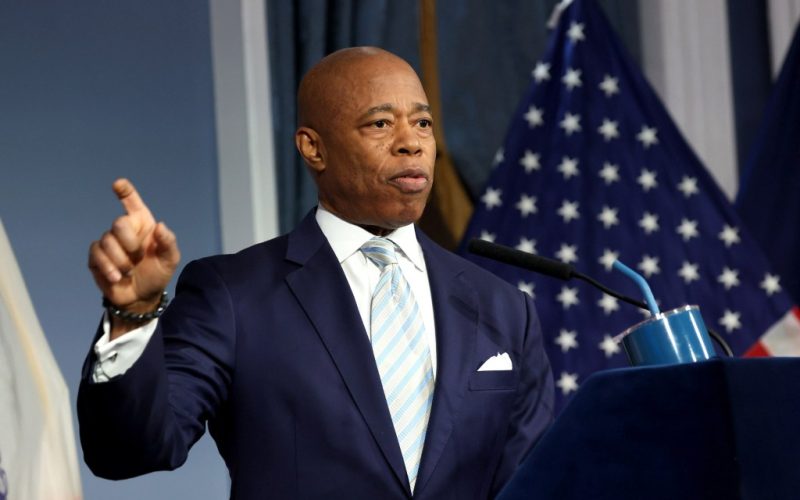Savings on migrant spending and better-than-expected tax revenue will allow the city to restore two previously canceled police classes and put an additional 1,600 officers on the street, Mayor Adams said Wednesday.
The city will also boost spending in the cash assistance program and the CityFHEPs program.
Adams said the budget expansion was largely made possible due to $436 million in savings on migrant spending since July, with total savings tallying up to $785 million, the mayor said, although Jacques Jiha, the city’s budget director, said that the budget’s growth by $3 billion was in large part due to new grant money. The updated plan reflects an additional $1.6 billion in federal grant funds, plus more than $650 million in state grant funds in this fiscal year.
The city will also boost spending in the cash assistance program and the CityFHEPs housing voucher program.
“We made sure we made the smart fiscal decision so we can build a future for working people in the city, and this plan is stepping up to fund critical programs that have been supported with temporary federal stimulus dollars,” Adams said. “So I want to be clear, the November plan invests in New York and aims to make their lives easier by prioritizing the services they need.”
Previously, the budget for fiscal year 2025 sat at around $112 billion. The new plan, which boosts the total to $115 billion, also reflects over $200 million in unexpected tax revenue this fiscal year, Adams said, with additional funds coming from debt service and pension savings.
The restored police classes will add 1,600 new cops to the police force by October 2025. The classes were cut in 2023 as part of Adams’ controversial belt-tightening during the migrant crisis.
“Despite claims to the contrary, new arrivals have neither bankrupted nor destroyed our city,” Speaker Adrienne Adams and Finance Chair Justin Brannan said of the budget update in a joint statement. “At a moment when our parks and vital greenspaces are vulnerable and experiencing brush fires caused by a historic drought, the lack of investments to maintain and protect them despite available resources is irresponsible.”
Adams has cut the Parks Department budget over the past few years, and the budget update did not include any major new investments in the area.
Last year, the mayor unveiled rounds of drastic cuts, which he said were required in order to offset the costs of caring for the migrants.
Jiha said that this year’s migrant savings are due to the asylum seeker population in the local shelter system falling from its peak of 69,000 and because fewer than expected have come to New York since July.
The city will put $467 million in the cash assistance program and $115 million into the CityFHEPS rental assistance program, Adams said at a press conference announcing both the budget update and the appointment of the new NYPD commissioner, Jessica Tisch.
New money will also flow to the city’s public schools, including $80 million for technology resources and $65 million for school contract nurses, according to the budget plans.
Other new budget funds include funding for a planned hospital unit to serve patients in custody with serious health conditions, staffing for “Operation Padlock to Protect”, new positions on the Sheriff’s electronic ankle monitoring program and investments in the city’s waste management initiatives.
Andrew Rein, president of fiscal watchdog group Citizens Budget Commission, said that the budget update came with “some good news” but warned the city might face budget gaps of around $3 billion more than the city has projected.
“While the City used over a billion dollars in newly identified resources to fund predictable shortfalls in the current year, it continues to low-ball billions of dollars for future spending on overtime, housing vouchers, public assistance, and early childhood programs, among others,” Rein said in a statement.
Originally Published:








